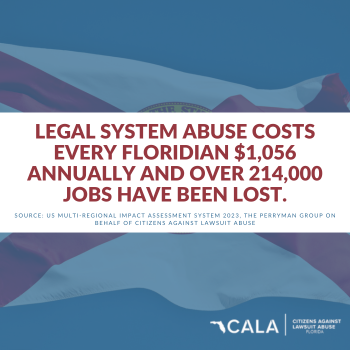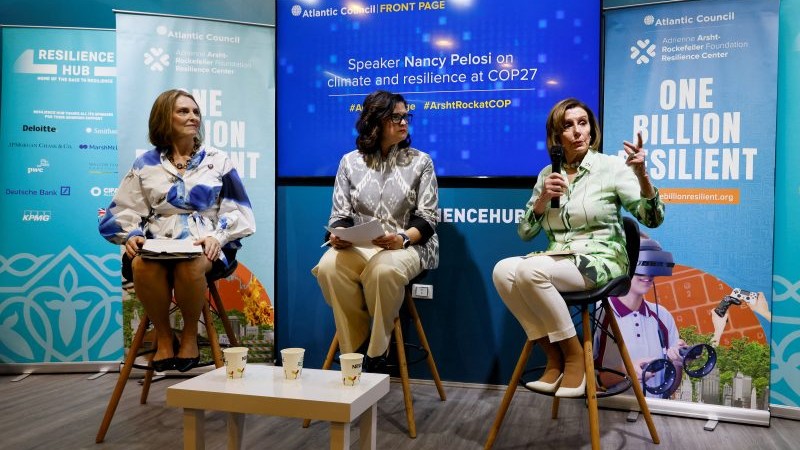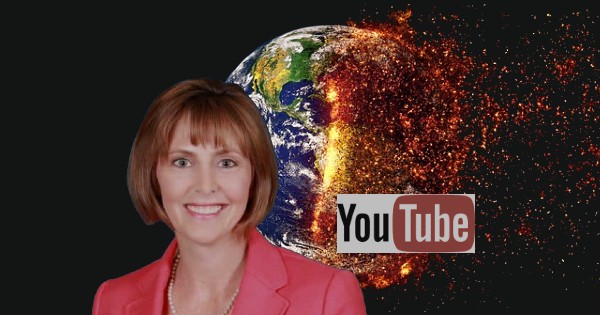In today’s mainstream consciousness, climate change has surpassed nuclear-warhead proliferation as the biggest existential threat to mankind. Moreover, daily media coverage suggests that climate change is happening faster than previously expected and with broader and more ominous implications. Clearly the challenges (and opportunities) presented by climate change require a massive but exceedingly thoughtful response from policymakers, corporations, investors, and citizens alike.
Financial institutions of all kinds are now subject to conflicting political pressures from both the Left and the Right; they must respond to climate change in a way that helps solve the problem while also adhering unwaveringly to their fiduciary duties. Below, we discuss why many climate change initiatives are misguided and counterproductive, identify serious challenges to real and immediate progress, and outline a preferred “both/and” approach for institutional investors.
Divestment
Many on the Left are demanding the divestment of fossil-fuel-related assets from institutional investment portfolios. While we appreciate the sincerity of their concerns, the divestment impulse is a naïve, politically expedient, and completely wrongheaded reaction to the world’s most complex problem. Divestment ignores how capital markets work and thus is hopelessly flawed as an effective strategy for combating climate change.
Historically, the closest analog to today’s divestment clamor was the institutional investment community’s campaign against tobacco more than two decades ago. In March 2000, the California State Teachers Retirement System (CalSTRS), America’s second-largest public-pension fund, divested its ownership interest in tobacco companies. Sincethen, however, no one has cited the CalSTRS divestment decision as the reason they stopped smoking. Similarly, and due primarily to the absence of viable alternatives, no one will stop driving an internal combustion engine automobile if their local or state pension fund divests from fossil fuels.
More importantly, divestment compounds the problem by robbing responsible shareholders (e.g., CalSTRS) of corporate management engagement opportunities and transfers ownership rights to investors for whom environmental stewardship is not an important consideration. The success Engine No. 1 achieved in its 2021 ExxonMobil (XOM) proxy battle would not have been possible had CalSTRS divested its significant XOM equity position. Big asset managers like BlackRock, State Street, and Vanguard—all under attack for their fossil fuel holdings—played a key role in that boardroom saga as well.
Divestment also harms asset owners like public pension funds by lowering the investment returns on which their beneficiaries depend. For example, since March 2000, CalSTRS has conducted six separate divestment campaigns, each of which has resulted in an opportunity cost to that pension plan. As of December 31, 2022, CalSTRS has incurredEditSigna $9.5 billion combined opportunity cost as a result of these divestment initiatives.
Divestment proponents also ignore the inconvenient truth that 65 percent of the world’s oil and gas reserves are controlled by national oil companies (NOCs), most of which operate as part of (or with protection from) despotic political regimes. Indulging the fantasy that divestment will somehow put Western oil majors out of business leaves the entire oil and gas market to the NOCs. And Saudi Aramco, with the lowest exploration and production costs and 52 years’ worth of proven reserves, will be the last man standing. How does that sound?
Finally, the only way divestment could work is by raising the cost of capital for fossil fuel-related activities in a way that discourages or curtails supply. Given the current absence of alternatives at scale, energy demand is relatively inelastic. Accordingly, any short-term reduction in supply will result in immediate price increases for gasoline and other carbon-based products. Those price increases will fall disproportionately on the members of society who can least afford to bear them, namely the poor and working classes who cannot work from home and for whom an electric-vehicle purchase is financially untenable. We support the concept of a “Just Transition,” but justice most assuredly won’t be won by divestment.
Methane
Water and methane gas are the two primary byproducts of oil- and gas-exploration efforts. Moreover, when it comes tonear-term environmental damage, methane is about 85 times worse than CO2 and accounts for 30 percent of global warming to date. North America, and the U.S. in particular, has among the world’s most stringent methane emissions standards. Moreover, the Biden Administration’s 2022 Inflation Reduction Act (IRA) established a Methane Emissions Reduction Program (MERP) that applies to enterprises obligated to report emissions under the Clean Air Act (namely, companies that emit greater than 25,000 metric tons of CO2-equivalent per year). Penalties imposed by MERP start at $900 per metric ton in 2024, increasing to $1,500 in 2026 and thereafter. These penalties provide producers with a compelling economic incentive to lower methane emissions (principally through reduced flaring and pneumatic valve replacement).
We’re not entirely sure, and we don’t hold ourselves out as geopolitical experts, but we suspect that programs like MERP don’t exist in production regions like Iran, Turkmenistan, or Venezuela. Rather than continuing to support futile and counterproductive divestment and net zero initiatives, environmental activists should be vigorously campaigning to move as much oil and gas production as possible to the U.S.
Renewables
As costs decline, renewables will grow as a proportion of the overall energy supply; however, three primary obstacles currently impede further, broader renewables penetration. First, wind and solar will forever be constrained by intermittent production (i.e., no electricity is produced when the sun doesn’t shine, or the wind doesn’t blow). For now, natural gas is and will continue to be the preferred (i.e., most reliable, most cost-efficient, and least environmentally harmful) source of back-up power generation within the renewables complex. Efforts to expand natural gas use on both a direct and complementary basis should be encouraged, not attacked.
Second, vastly improved battery technology is required to provide back-up power generation that reliably complements renewables’ intermittency. As the world decarbonizes, ever-greater quantities of select metals and rare earths will be needed for current and future battery production. Basic commodities such as copper will see huge demand (and accompanying price) increases.
A further challenge is that rare earth mining and production activities are often concentrated in autocratic, hostile, and/or unstable countries. For example, 70 percent of the world’s cobalt supply is sourced from the Democratic Republic of Congo, not exactly a stable, democratic state. Plan B is even less attractive: today’s second-largest cobalt producer is Russia. Adding to the problem, China accounts for 70 percent of the global economy’s rare earths production (and has 44 million metric tons in the ground vs. 2.3 million for the U.S.), leaving critical elements of the global energy transition vulnerable to America’s largest and perhaps most formidable geopolitical rival.
In the absence of new and considerably larger sources of select metals and rare earths, the energy transition will prove punishingly inflationary and geopolitically destabilizing. Rather than follow the typical NIMBY protest playbook, activists who care about a Just Transition should start aligning around zoning and siting reforms at all jurisdictional levels to support mining and related production activities in the U.S. and other Western democracies.
Third, the penetration of renewables-generated electricity is and will remain constrained by the national grid itself. The Department of Energy estimates that the U.S. needs to increase transmission capacity 60 percent by 2030—and triple it by 2050! Yet efforts to expand the grid with new transmission lines have met with often-successful protests from environmental activists.
Consider the Northern Pass project in New England, where activists defeated a plan to bring Canadian-produced hydro power to Massachusetts. Activists opposed the erection of transmission lines and continued their protests even when project managers proposed burying large sections of the transmission system. Congrats, activists: Massachusetts will now burn more carbon in the future! Again, zoning and siting reforms, including a more aggressive use of eminent domain actions, are required to architect and deploy critical grid-expanding infrastructure on a timely basis.
Many environmentalists shouting for more renewable energy are simultaneously rallying to defeat plans to expand the grid, even though grid expansion is perhaps the most essential ingredient for a decarbonized future. There is no free lunch, and mature, rational adults who care about a Just Transition must recognize that the energy transition, like most other aspects of life, is full of tradeoffs.
The Emerging Energy Mosaic
Renewables alone will not prove sufficient to offset the global economy’s current reliance on fossil-fuel-based energy sources. Breakthroughs in hydrogen, fission (i.e., nuclear), fusion (the holy grail), and other technologies will also be required to completely decarbonize human activity on Earth. Accordingly, a Just Transition is ultimately and largely a story about technology and the race to develop and deploy that technology before anthropogenic warming destroys our civilization. Again, rather than pursue futile and counterproductive attempts to vilify fossil fuel producers or rage against nuclear power, activists should be lobbying governments and NGOs to boost support for the emerging energy technologies that will be required to achieve full and genuine decarbonization.
The Institutional Investor Roadmap
Institutional investors (e.g., public pension funds), must make investment decisions consistent with their fiduciary obligations, which include a sole and exclusive duty of care on behalf of beneficiaries and maximizing risk-adjusted returns on fund capital. In evaluating potential investments, a prudent fiduciary may not subordinate the pecuniary interests of beneficiaries to political or societal goal advocacy. Bowing to external pressures supporting divestment and other futile energy transition strategies (e.g., net zero) is therefore inconsistent with the proper discharge of fiduciary responsibility. Instead, a credible energy transition will require a “both/and” approach comprising investments in traditional oil and gas production and increasing allocations to renewables and emerging energy technologies.
Traditional oil and gas investments generate positive, inflation-indexed returns and provide important diversification benefits relative to other institutional-quality asset classes (e.g., stocks and bonds). When concentrated domestically, these traditional energy investments also support the creation of high-paying jobs, stimulate demand for complex equipment and facilities, and help secure and fortify America’s preeminent global standing through energy independence. As discussed above, capital commitments to traditional, U.S.-based energy projects also comport well with responsible climate change initiatives, given domestic producers’ reduced methane profile relative to most NOCs and other non-Western supply sources.
Simultaneously, institutional investors are uniquely positioned to provide capital to burgeoning opportunities in renewables and, more importantly, the nascent but expanding universe of emerging energy technologies. Investments in wind, solar, and hydro projects are now commonplace in leading funds’ allocation to energy and related infrastructure assets. And as corresponding cost curves decline, the menu of institutional-quality investment opportunities in renewables will increase.
Today, however, our call to action for the institutional investment community has moved from renewables to a sharpened focus on emerging energy technologies, specifically nuclear, hydrogen, and fusion. Multiple fusion start-ups enable diversification among competing technologies, while large-scale hydrogen projects are ideally suited for big, long-term institutional capital commitments. Advanced Small Modular (i.e., fission) Reactors (SMRs) and nuclear power generation services will soon become viable institutional investment categories, too.
Conclusion
Agitating against Western oil and gas production and protesting electrical grid expansion threaten our collective ability to address the myriad challenges posed by climate change. This misguided activism is wasting precious time and guiding many concerned and earnest citizens down fruitless paths. What’s really necessary for a rational and responsible climate change response are huge capital commitments across an array of both traditional and emerging energy technologies.
Significant public policy changes are also required as geopolitical realities may soon limit reliable access to essential battery and electrification materials. At the same time, local and state zoning regulations that stymie grid expansion at the speed and scale necessary to achieve meaningful decarbonization need immediate reform. Against this backdrop, institutional investors should employ a “both/and” investment strategy that simultaneously commits capital to theenergy transition while faithfully fulfilling all fiduciary obligations to fund beneficiaries.
Robert G. Eccles is with the Saïd Business School at the University of Oxford. John D. Skjervem is the Chief Investment Officer of the Utah Retirement Systems. This article was originally published by RealClearEnergy and made available via RealClearWire.













